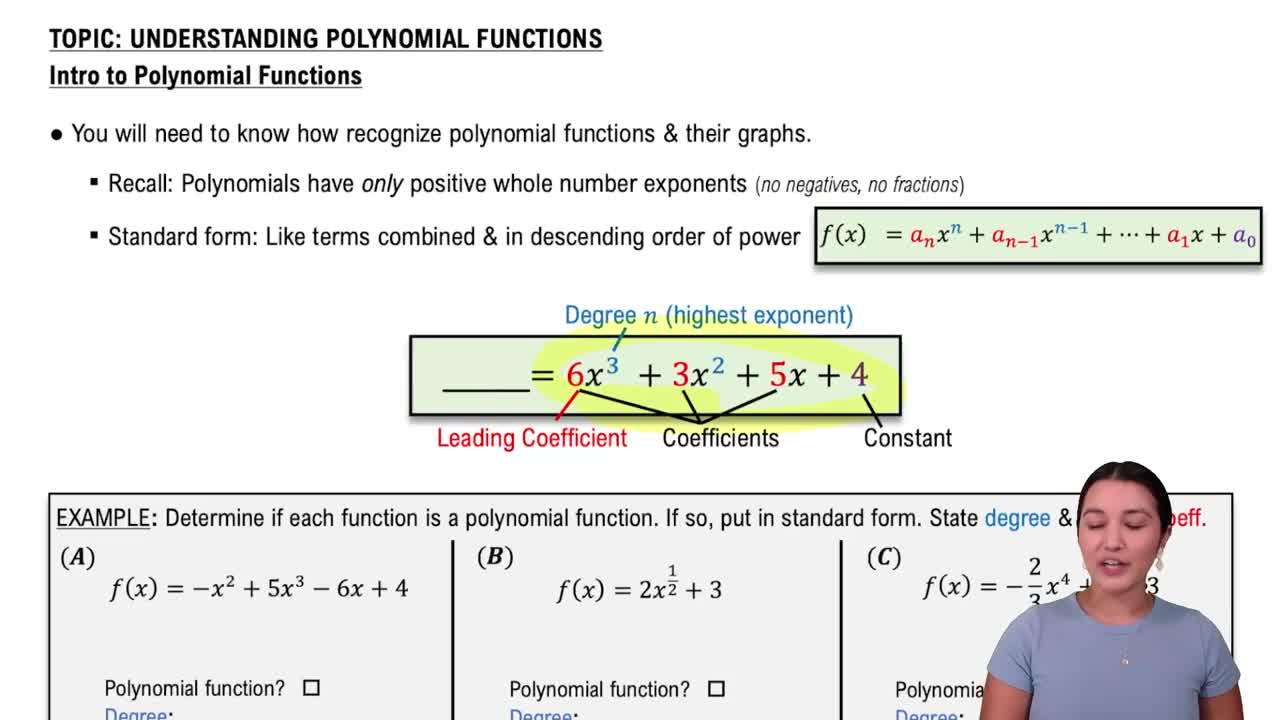Here are the essential concepts you must grasp in order to answer the question correctly.
Synthetic Division
Synthetic division is a simplified form of polynomial long division that is used specifically when dividing by a linear factor of the form (x - c). It involves using the coefficients of the polynomial and a value derived from the divisor to perform the division in a more efficient manner. This method reduces the complexity of calculations and is particularly useful for higher-degree polynomials.
Recommended video:
Polynomial Functions
A polynomial function is a mathematical expression involving a sum of powers in one or more variables multiplied by coefficients. In this context, the polynomial is represented as P(x) = x^5 + 3x^4 + 2x^3 + 2x^2 + 3x + 1. Understanding the structure of polynomial functions is essential for performing operations like division, as it helps in identifying the degree and behavior of the function.
Recommended video:
Introduction to Polynomial Functions
Remainder Theorem
The Remainder Theorem states that when a polynomial f(x) is divided by a linear divisor of the form (x - c), the remainder of this division is equal to f(c). This theorem is useful in synthetic division as it allows for quick evaluation of the polynomial at specific points, providing insight into the roots and behavior of the polynomial without fully performing the division.
Recommended video:



